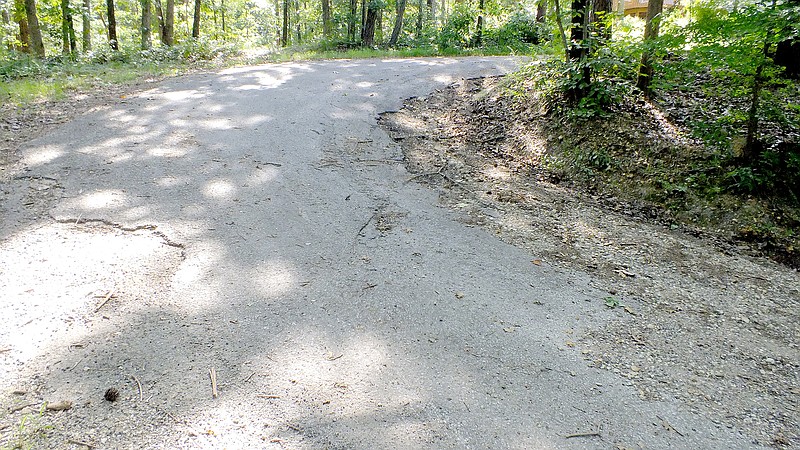The best way to repair Bella Vista's ailing roads would be to divide the city into geographical areas and fix a percentage of streets in a particular sector each year, according to Mike Button, Street Department superintendent.
Button laid out the preliminary details of his plan Thursday, July 9, during the Street Committee's regular meeting. Button said he hopes to have a finalized version of his draft submitted to Mayor Peter Christie later this summer.
"Bella Vista isn't like a normal city," Button said. "There's no grid pattern. If it was, we'd draw four quadrants and do 25 percent here, 25 percent there and 25 percent in this quadrant."
Dividing the city into quadrants and repairing a percentage of the roads will keep the Street Department from picking individual streets and planning too far in advance, Button said, which could be detrimental to repairs.
"Ultimately we will pick a street, but instead of saying in 2016 we're going to do street A, B, C and D, we'll do a certain amount of miles in a given area," Button said.
By not focusing on particular streets, the department can better avoid delays and spread repairs throughout the city, Button said.
Bella Vista has about 186 miles in need of immediate repair, according to a study performed by GreenbergFarrow. The city hired the architectural/engineering firm in March to provide "pavement distress data collection services," according to City Council documents.
GreenbergFarrow uses a government-issued rating system to measure and obtain pavement condition indexes, then translates the data into color codes, according to Michael Morgan, a consultant with the firm. There are four levels of ratings: green (good), yellow (fair), orange (critical) and red (lost).
About 292 miles of Bella Vista's roads are in good condition, Morgan said, meaning they don't need immediate action. Yellow-coded streets account for 164 miles, while orange-coded streets account for 19 miles.
Only 3.3 miles were designated in red. They are comprised mostly of cul-de-sacs on the east side of U.S. 71, according to a map provided by GreenbergFarrow.
With asphalt overlay running at about $70,000 per mile, it will cost approximately $13 million to repair all of the roads coded in yellow, orange and red, Christie said last month. The cost does not include "any base improvements and drainage concerns that might need to be addressed," according to minutes from the June meeting of the Public Safety Committee.
The Streets Committee on July 9 proposed a 1-percent sales tax increase and boost in the Street Department's budget to cover the costs. Bella Vista collects a 1 percent sales tax, which generates approximately $1.6 million per year, according to Alderman John Flynn, who also chairs the committee.
If residents approve a 1-percent increase and increase the Street Department's roads budget to $1.6 million -- up from $1 million -- then the city will have about $3.2 million a year to repair roads, Flynn said. The tax would sunset after 10 years, Flynn added.
"Mayor Christie is also looking at state and federal grants to help with the repairs, too," Flynn told the committee.
The Streets Committee is comprised of Flynn, Button and citizen volunteers Rory Crivello, Rick Neal and Al Langley. Mayor Christie formed the committee shortly after taking office in January.
The committee meets at 3 p.m. on the first Thursday of the month inside the conference room at City Hall.
General News on 07/22/2015
